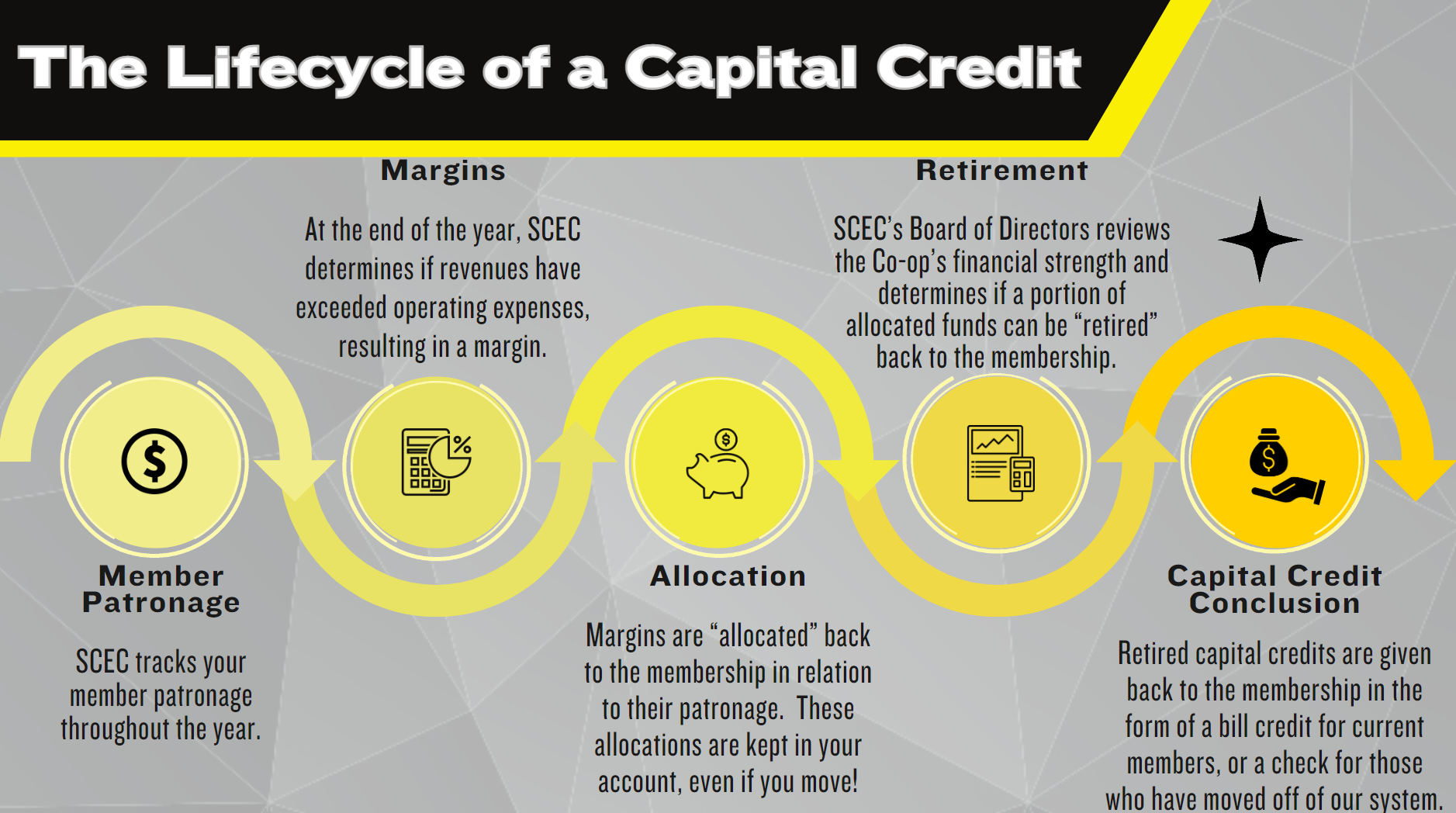888-326-3356 2223 North A St Wellington, KS 67152
Your Share in the Cooperative
In December 2024, Sumner-Cowley Electric retired $552,974.80 in capital credits, returning funds to current and former members through bill credits or checks.
When you signed up for electric service with Sumner-Cowley, you became more than just a customer—you became a member of a cooperative. Unlike investor-owned utilities that return profits to shareholders, electric cooperatives operate at cost. Any excess revenue, known as margins, is allocated to members based on their electricity usage and later returned as capital credits.
This year, members who received service in 1998 received a capital credit retirement, reflecting their contribution to and ownership of the cooperative during that time. While 1998 may seem like a long time ago, these funds helped keep rates stable, reduced the need for outside borrowing, and supported the construction and maintenance of a reliable electric system.
Below are answers to common questions about capital credits.

FAQ
WHAT ARE CAPITAL CREDITS?
Sumner-Cowley is a cooperative, owned by it's members, so it does not necessarily earn profits. Instead, if revenues exceed the cost of doing business (expenses), the coop has earned margins (profits). Each year, margins earned are assigned to Sumner-Cowley members in proportion to the amount paid for electricity during that year. These are called capital credits. Capital credits represent the most significant source of equity for Sumner-Cowley. Since a cooperative's members are also the people the coop serves, capital credits reflect each members' ownership in, and contribution of capital to, the cooperative. In contrast, shareholders of investor-owned utilities may or may not be customers of the utility.

